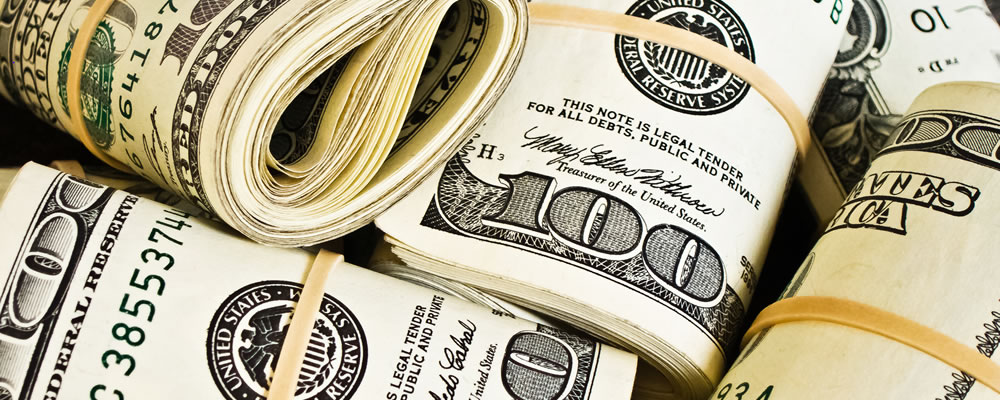Euro US Dollar (EUR/USD) Exchange Rate Slumps amid Risk-Off Mood and Dovish ECB
The Euro US Dollar (EUR/USD) exchange rate has fallen to a 14-month low today amid a surge in the US Dollar (USD).
A prevailing risk-off mood seems to be supporting the safe-haven ‘Greenback’, while the single currency is pressured by Europe’s energy crisis and the European Central Bank’s (ECB) dovish stance.
Euro (EUR) Drops amid Multiple Headwinds
The Euro (EUR) has tumbled to a 14-month low against the US Dollar today, despite some positive data from the Eurozone this morning.
The latest economic sentiment report in the Eurozone edged up to 117.8 in September, just above August’s 117.6 and beating forecasts of a drop to 116.9.
The unexpected rise in economic sentiment was caused by increased optimism among consumers and higher morale in the manufacturing and construction sectors. However, sentiment deteriorated among retailers and service providers.
But despite this positive report, the Euro has tumbled today.
One factor weighing on the Euro is its negative correlation to the US Dollar, which has surged today amid a risk-off market mood.
Concerns are also growing over the European energy crisis, particularly as the days are growing darker and colder.
In addition, EUR/USD may be affected by the different approaches to monetary policy between their respective central banks, the ECB and the Federal Reserve.
The Fed has taken a hawkish approach recently, with a tapering announcement expected soon. Economists predict that the Fed will raise interest rates sometime next year.
Meanwhile, the ECB has been far more dovish. Rather than tapering, the ECB has decided to slow the pace of its bond-buying programme but keep the total amount the same. In recent days, ECB President Christine Lagarde has reiterated her belief that high interest rates are due to temporary effects, and analysts expect an ECB rate hike in 2024.
This divergence in policy favours the US Dollar over the Euro, and may be a factor in EUR/USD’s slump today.
US Dollar (USD) Jumps as Market Sentiment Sours
Meanwhile, the US Dollar has shot up today as a souring market sentiment supports the safe-haven currency amid fears of a global energy crisis and economic tensions in the US.
So far, Europe has been hardest hit by soaring energy prices. However, with gas stores in Asia and North America also unseasonably low (as they are in Europe), this winter could see global demand push prices even higher.
Such an event could dent many countries’ economies, with consumer spending hit by a cost-of-living squeeze and factories having to pause or halt production due to unprofitability. If rising energy prices keep pushing up inflation but dent economic growth then we could enter a period of global stagflation.
China, the world’s second-largest economy, is also facing power shortages. A lack of coal and tougher emissions rules are causing residential power outages, while some factories are having to pause production to avoid exceeding energy limits. The potential disruption this could have on manufacturing may add to the issues already affecting international supply chains, thereby slowing the global economic recovery.
In addition, economic concerns are also weighing on risk sentiment. Republicans in the US Senate have recently blocked attempts to raise the borrowing limit despite warnings that the US Treasury could run dry by 18 October.
In a letter to Congress, US Treasury secretary Janet Yellen wrote:
‘At that point, we expect Treasury would be left with very limited resources that would be depleted quickly. It is uncertain whether we could continue to meet all the nation’s commitments after that date.
‘We know from previous debt limit impasses that waiting until the last minute can cause serious harm to business and consumer confidence, raise borrowing costs for taxpayers, and negatively impact the credit rating of the United States for years to come’.
Economists and Fed officials have warned that if the US were to default then it would have a huge negative impact on the country’s economy, with Jamie Dimon, CEO of JPMorgan Chase, calling it a ‘potentially catastrophic event’.
Despite the threat to the US economy, USD seems to actually be benefitting from this news as it is sapping risk appetite and thereby supporting the safer US Dollar.
EUR/USD Exchange Rate Forecast: Unemployment Data to Bolster the Euro?
Looking to tomorrow, risk appetite could continue to play a key role in EUR/USD. If market jitters remain, then the pair may remain subdued, or even fall lower. However, risk sentiment has been particularly volatile in recent months, so there is a slight possibility that it will reverse.
Data wise, both the Eurozone and the US are expecting some positive employment data tomorrow.
The German unemployment rate for September is expected to drop from 5.5% to 5.4%, while the Eurozone unemployment rate for August is forecast to drop from 7.6% to 7.5%. If these reports meet expectations, it may bolster the single currency.
Initial jobless claims in the US are also expected to fall. However, after unexpectedly rising last week, this week’s results could come as a surprise.



